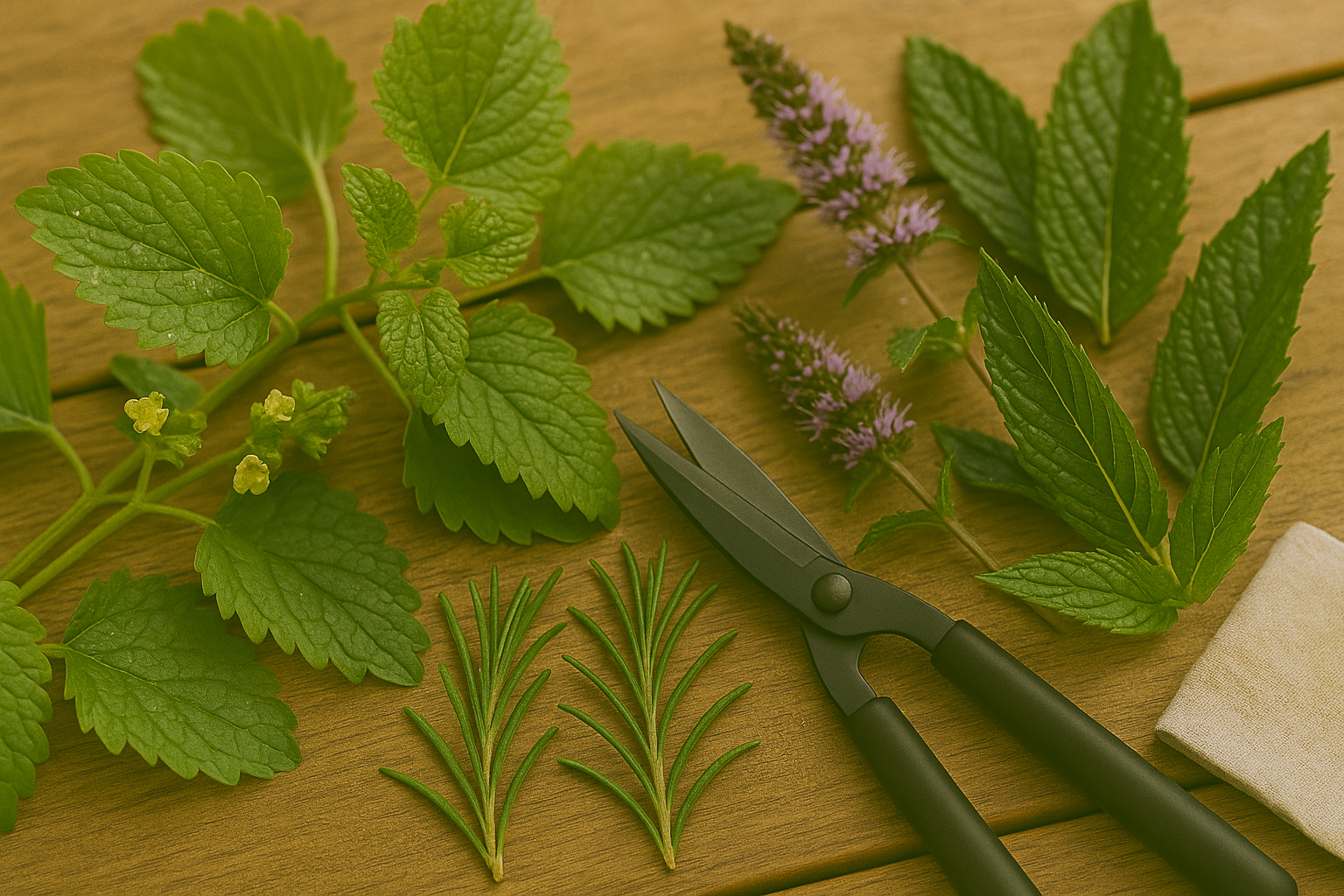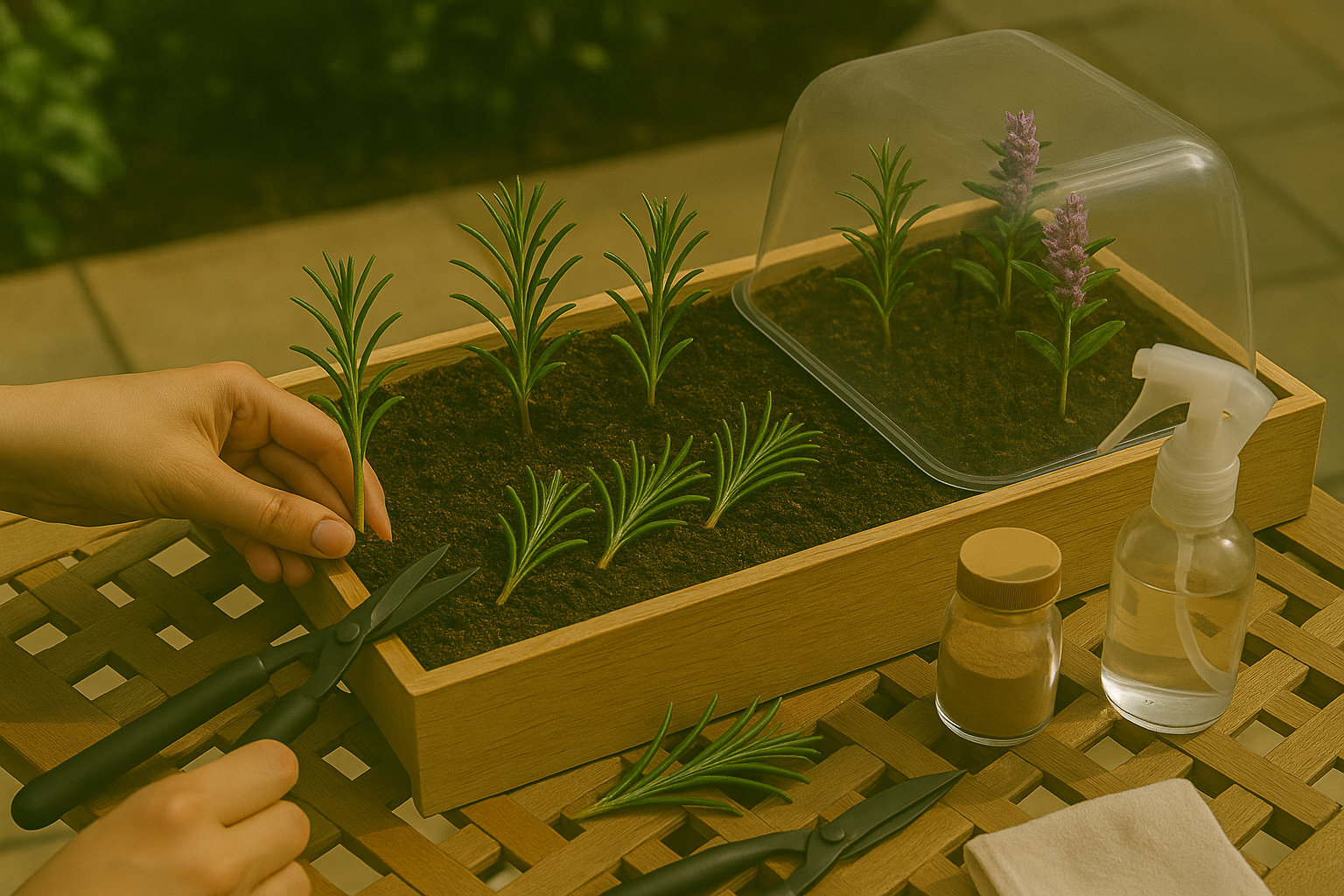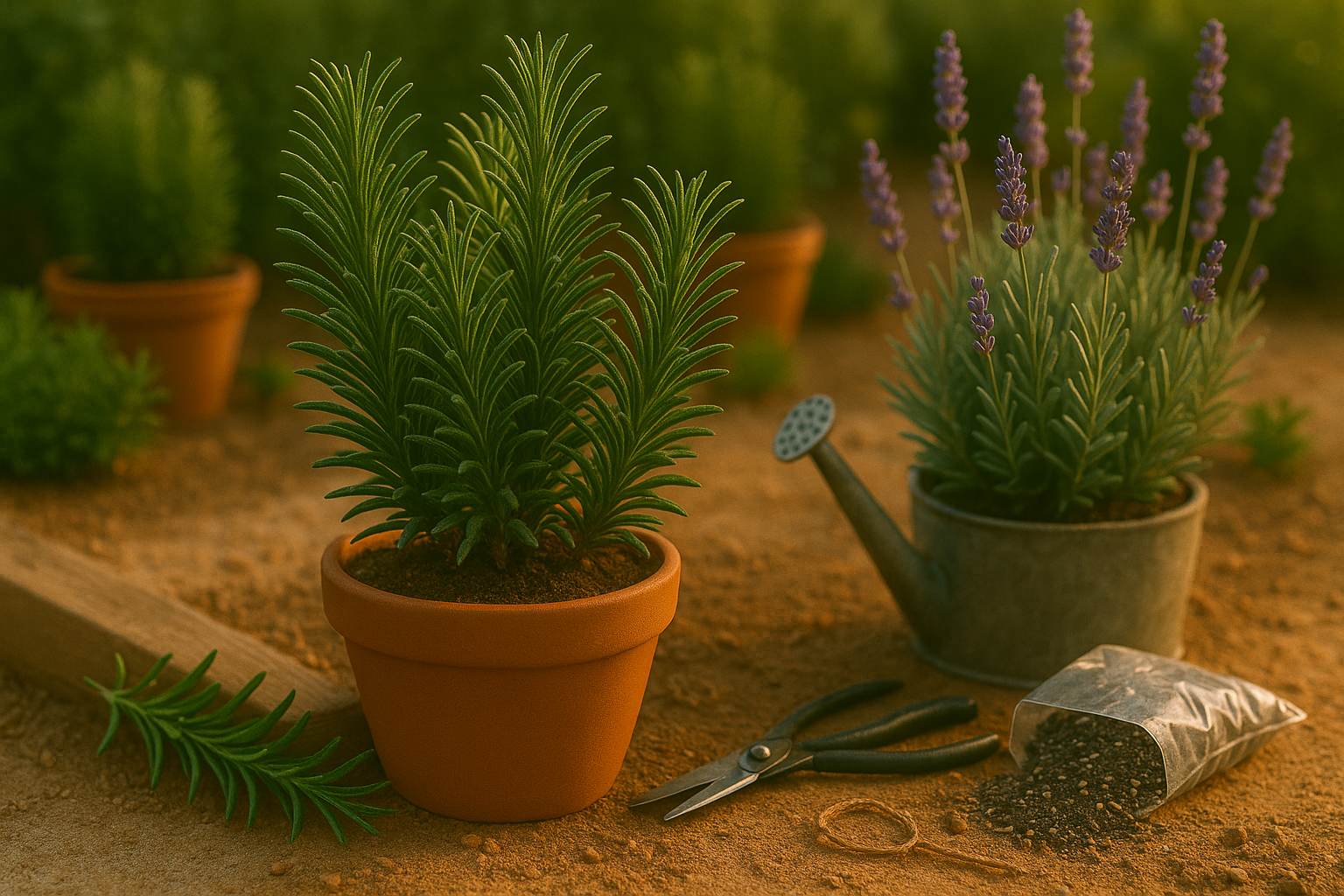Introduction
If you love herbs, you’ve probably found yourself choosing between rosemary and lavender at some point. Both are classic Mediterranean plants, adored for their fragrant leaves and versatile benefits. Rosemary boasts sturdy, pine-like needles and a robust, savory aroma that enhances roasted potatoes or chicken in the kitchen. Lavender, with its soft, silvery foliage and calming scent, is famous for promoting relaxation in teas, sachets, and essential oils.
Whether you’re hoping to enrich your garden, spice up your recipes, or create a soothing home ritual, these two herbs both deserve a spot on your shortlist.
But when it comes to actually growing rosemary versus lavender, the differences matter. Should you plant rosemary if your yard bakes in summer heat, or does lavender handle dry spells better? Which will survive winter frost or thrive in your limited indoor space?
In this post, we’ll break down the key growing and care differences—covering everything from sunlight needs to pruning tricks—so you can decide which herb best fits your garden, home, and lifestyle. Let’s dig into what sets these fragrant favorites apart and how you can help your chosen herb flourish.
Appearance, Scent, and Botanical Differences

Lemon balm and mint are both fresh, leafy herbs, but their appearances make them easy to tell apart once you know what to look for. Lemon balm (Melissa officinalis) has soft, heart-shaped leaves with gently serrated edges and a light green color. It grows in small, bushy clumps that can reach about two feet tall. Its tiny white or pale-yellow flowers cluster at the stem tips in late summer.
In contrast, mint (Mentha spp.) features more elongated, sharply toothed leaves in a deeper green shade. It often grows in sprawling runners that quickly spread in garden beds. Mint’s flowers are usually lilac, pink, or purple, forming dense spikes above the leaves.
The difference extends to scent: lemon balm gives off a distinct, lemony aroma when you rub its leaves—perfect for calming teas or lemony desserts. Mint, on the other hand, is instantly recognizable for its cool, menthol fragrance, making it a classic choice for iced drinks and refreshing dishes.
Botanically, lemon balm belongs to the Lamiaceae family and traces its roots to southern Europe and the Mediterranean, where it has long been used for uplifting mood and easing stress. Mint, also a member of the Lamiaceae family, originates from various regions in Europe, Asia, and Africa, and has always been prized for its invigorating scent and ability to soothe digestive troubles.
Whether you’re spicing up your kitchen or brightening your garden, these subtle differences can help you pick the perfect herb for every need.
Growing Needs
Rosemary and lavender both thrive best in well-draining, sandy or loamy soils that don’t hold too much moisture—heavy, clay-rich soil can stunt their growth or cause root rot. If your garden soil is heavy, consider mixing in sand or gritty compost before planting, or use raised beds and large pots with drainage holes for better results.
When it comes to sunlight, both herbs love full sun and need at least six to eight hours of direct light daily. If you only have partial shade, rosemary will tolerate it better than lavender, but neither will flower abundantly or develop robust flavor without strong sunlight.
In terms of watering, these Mediterranean natives prefer drier conditions—let the soil dry out between waterings, and avoid overhead watering to prevent fungal diseases. Once established, both are drought-tolerant and thrive on neglect rather than over-care, making them perfect for busy gardeners or low-maintenance planting schemes.
For best results, place them in locations with excellent airflow and plenty of sun, such as garden borders, rock gardens, or containers on sunny patios. Pots are ideal for controlling soil quality and drainage, especially in wetter climates. Just be sure to elevate the pots on feet or gravel to prevent waterlogging during rains.
By giving rosemary and lavender these simple conditions, you’ll enjoy strong, fragrant plants that reward you all season long.
Hardiness and Lifespan
When comparing rosemary and lavender, both herbs are known for their resilience, but there are key differences in their hardiness and longevity. Rosemary thrives in USDA zones 7–10, tolerating temperatures down to around 20°F, though it may struggle in regions with harsh winters or excessive moisture.
In contrast, lavender is even hardier, especially English lavender (Lavandula angustifolia), which can survive in zones 5–9 and withstand winter lows near -20°F, making it a better pick for colder climates.
Both herbs dislike soggy soil, but rosemary is especially susceptible to root rot, so plant it in well-drained, sandy soil and avoid overwatering. Lavender generally resists most pests and diseases if kept dry and in a sunny spot; rosemary also has strong defenses but can attract aphids and spider mites, particularly indoors.
As for lifespan, both herbs are perennial when properly cared for, living five to fifteen years or even longer with routine pruning and the right conditions. To maximize their longevity, prune annually to maintain shape, remove any dead wood, and ensure good air circulation around the plant.
Gardeners in humid areas may see mildew on lavender, while excessive rain can weaken rosemary, so consider raised beds or pots for better drainage.
In summary, lavender tends to be hardier and more cold-tolerant, while rosemary demands a bit more protection in harsher climates, but both can be incredibly resilient with simple, proactive care.
Propagation

Propagating rosemary and lavender is a satisfying way to expand your garden, with options like cuttings, seeds, or even layering. For most gardeners, taking stem cuttings is the quickest and most reliable method. Simply snip healthy, non-flowering shoots about 4 inches long in late spring or early summer, remove the lower leaves, and place them in moist, well-draining soil or perlite. Keep the container covered with a clear plastic bag to maintain humidity until roots appear, usually within a month.
Starting from seed works too, though both rosemary and lavender can be slow and finicky germinators. Sow seeds on the surface of a seed-starting mix in early spring, barely cover them, and keep the soil warm and consistently moist. Patience is key here, as germination can take several weeks.
Layering—bending a low branch to the ground and covering a section with soil until it roots—is another low-effort option, best tried in spring. Whichever method you choose, be sure to use clean, sharp tools to prevent disease and avoid overwatering, since damp, stagnant conditions can quickly rot fragile cuttings.
Some gardeners struggle with cuttings wilting or failing to root; providing bright indirect light and avoiding excess heat helps. The best time to propagate is late spring through midsummer when plants are actively growing and at their healthiest. Stick with these proven tips, and you’ll soon have thriving new rosemary and lavender plants ready for your kitchen or garden.
Practical Care Tips for a Thriving Herb
Caring for your herbs throughout each season ensures strong growth and year-round harvests. In spring, trim back last year’s dead stems to encourage bushy new shoots. For example, snip basil just above a leaf pair and prune woody herbs like rosemary after their first flush of growth.
Summer maintenance involves frequent light harvesting—herbs like mint and oregano benefit from regular pinching to prevent legginess and boost flavor. In autumn, cut back perennial herbs by a third, but avoid hard pruning as winter approaches, especially for tender varieties like thyme or sage.
Use a balanced, organic fertilizer sparingly—too much can cause lush foliage with less flavor. A monthly feed is enough, but skip fertilizing in winter when growth slows. If you’re growing herbs in containers, make sure pots have drainage holes and use a lightweight, quality potting mix.
Indoors, choose a sunny windowsill and rotate pots weekly for even light. Remember, potted herbs dry out faster than garden ones—water when the top inch feels dry. Outdoors, group pots together to create a microclimate that shields roots from extreme sun or chill.
Avoid fertilizing newly transplanted herbs until they’re established, and never use high-nitrogen fertilizers, which can reduce essential oils in favor of leaf growth. Bringing potted herbs indoors before the first frost can extend your harvest, but watch out for pests hitching a ride.
With the right seasonal care and a light touch on feeding, your herbs will reward you with vibrant flavor and healthy growth all year long.
Harvesting, Uses, and Culinary Tips
The best time to harvest herbs is in the morning, just after the dew has dried but before the sun gets too hot—this is when the oils that give herbs their flavor and fragrance are at their peak. For both leaves and flowers, use sharp scissors or pruners to snip just above a leaf node, encouraging bushier growth for future harvests.
Harvest flowers just as they start to open to capture their highest concentration of beneficial compounds. In the kitchen, fresh herbs like basil, mint, and cilantro can transform salads, sauces, and drinks with vibrant flavor, while lavender and chamomile flowers are perfect for soothing teas or fragrant baked goods.
Outside of cooking, try adding sprigs of rosemary or thyme to homemade cleaning sprays for natural antibacterial properties, or create calming lavender sachets for closets and drawers.
Preserving herbs is simple: layer clean, dry leaves on a paper towel and microwave for a few seconds, or hang bunches upside down in a dark, well-ventilated space until fully dry. For year-round freshness, chop herbs and freeze them in olive oil or water in ice cube trays—just pop one out as needed for soups and roasts. Store dried herbs in airtight jars away from light and heat to keep them potent for up to a year.
